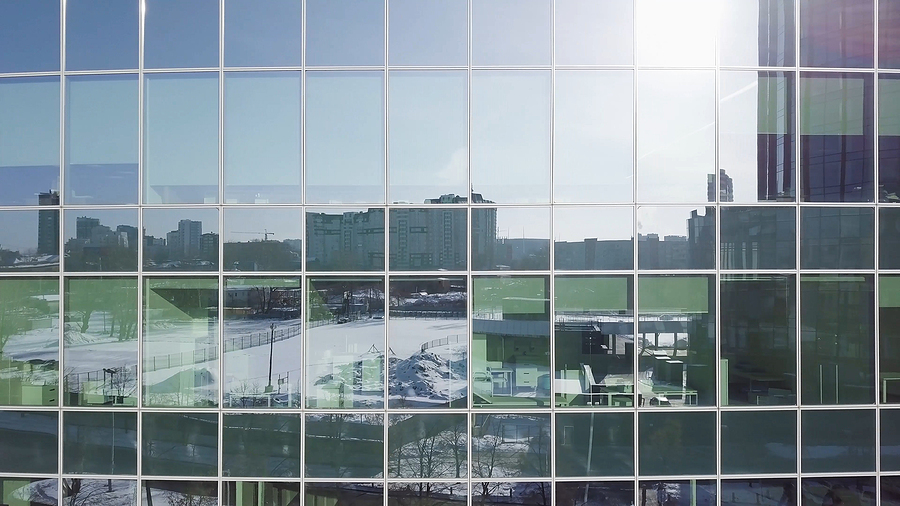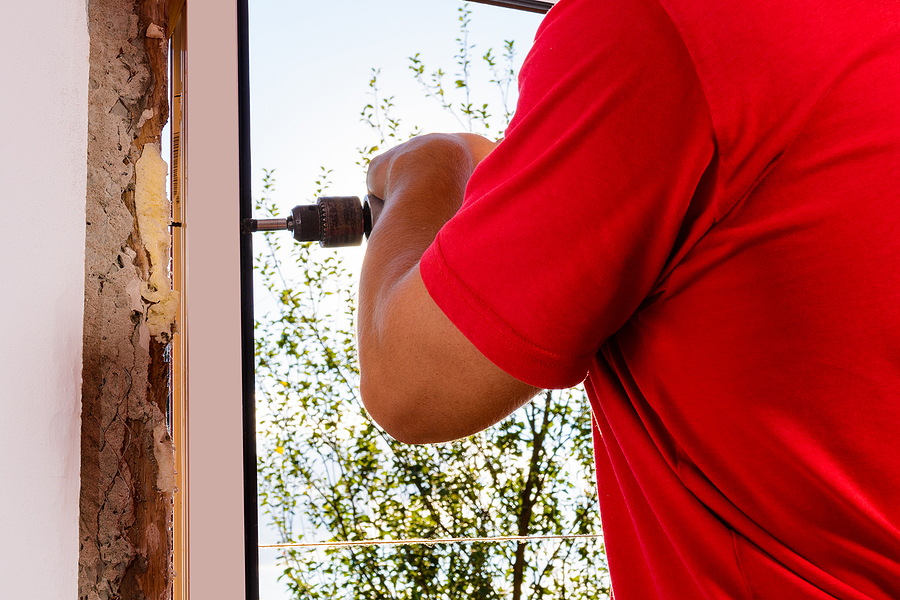Architectural windows are doing a lot more than letting in light. In 2025, they’re shaping comfort, code compliance, branding, and even carbon footprints. If you’re planning a new build or renovation, here are the top trends in architectural windows, with practical takeaways to help you choose commercial building window styles that look great and perform even better.
Dynamic Glazing In Architectural Windows
Electrochromic “smart” glass is moving from showpiece to spec-standard. These windows automatically tint throughout the day to cut glare and control solar heat gain, preserving views without blinds. Field studies and manufacturer data show energy reductions (often 5–15% annually) and lower peak cooling demand, along with measurable comfort and productivity benefits—big wins for offices, healthcare, and hospitality.
If your façade faces harsh sun or your program needs daylight without glare, dynamic glazing may offset HVAC and shading costs while elevating tenant experience.
Tightening Energy Codes
The 2024 IECC continues the steady push toward better envelopes, setting maximum U-factors and SHGC values for commercial fenestration by climate zone. Even if you’re not in a jurisdiction that’s already adopted 2024 IECC, many AHJs are signaling direction of travel for performance targets, so planning for higher-performing glass now is smart risk management.
Coordinate your window specs (glazing makeups, Low-E coatings, warm-edge spacers) early with the energy modeler to hit U-factor and SHGC targets without compromising aesthetics.
Thin-triple and High-R Glazing
“Skinny triple” insulating units, using ultra-thin interior plies, are delivering near-triple-pane performance in slimmer profiles and standard storefront pockets. National labs and industry groups highlight R-5/R-6 performance in near-term windows with promising field results, creating a path to upgrade thermal comfort and reduce loads without massive frame changes.
If you want higher performance without jumping to deep curtain wall sections, evaluate thin-triple options or secondary thin-glass inserts for retrofits.
Bird Friendly Facades
Cities and campuses are adopting bird-safe glazing rules that require patterning, etching, frit, or UV markers at collision-risk zones (typically the first 40–75 feet). New York City’s Local Law 15 is the bellwether, and higher-ed standards (and Canadian CSA A460) offer clear spacing guidance (often the “2×2” or “2×4” rules). Expect more jurisdictions to follow.
Incorporate bird-safe patterns early so you don’t fight them in permit review. Today’s options include subtle ceramic frits, first-surface etch, and UV-reflective markers that meet avoidance thresholds while preserving design intent.
Unitized Curtain Wall
Off-site fabricated, unitized curtain wall keeps gaining share. Pre-glazed panels shorten install schedules, boost quality control, and reduce weather delays, advantages that owners and GCs love on complex urban sites. Major façade contractors and system suppliers now offer deep unitized catalogs, from standard spans to jumbo-glass features.
If schedule certainty is critical, evaluate unitized systems in schematic design. Coordinate tolerances, anchor points, and logistics early to unlock the full time savings.
Acoustics Matter
Post-pandemic urban infill and mixed-use programs demand better sound control. Acoustic laminated glass, larger air spaces, and tuned IG makeups are helping designers hit STC/OITC targets without “heavy” aesthetics. Manufacturers and pro guides now spell out strategies for traffic and aviation noise control that fit standard storefront and window walls.
Don’t wait for late-stage complaints—set STC/OITC goals in your basis-of-design and validate with mock-up testing when noise exposure is high.
Embodied-Carbon Transparency
Beyond operational energy, owners are asking for lower-carbon glass. Federal Buy Clean initiatives and GSA’s Low Embodied Carbon (LEC) standards are pushing flat-glass EPDs and rewarding manufacturers that lower cradle-to-gate emissions. Recent EPDs show meaningful reductions compared to 2018 baselines, with agencies and design teams using published GWP values to make informed selections.
Request Type III EPDs for glass and glazing, and coordinate with the contractor’s procurement plan. In many climates, the operational energy savings of higher-performing windows “pay back” their added embodied carbon within months.
Bigger Panes, Slimmer Sightlines
“Jumbo” and oversized lites continue to grow in popularity to create seamless views and iconic lobbies. System makers are answering with higher-capacity frames, stronger interlayers, and improved handling. The aesthetic is minimal; the performance must still hit energy and wind criteria.
If you’re chasing ultra-clear views, pair large lites with the right Low-E (to manage solar gain) and validate deflection criteria with the structural engineer before you lock in module sizes.
Natural and Hybrid Ventilation Return
Owners want better indoor air quality with lower energy use. Research points to natural or mixed-mode strategies that use operable architectural windows to cut cooling energy and improve comfort when the climate allows. That means more operable units in office and education—coordinated with controls and security.
If your climate supports it, consider operables tied to BAS (or window sensors) for shoulder seasons. Coordinate opening sizes and safety hardware early.
Safety Glazing
In hurricane-exposed regions, impact-rated storefront and window walls remain non-negotiable. At the same time, fire-rated glazed walls and doors are growing as designers seek transparency that still meets compartmentation. Market and industry data point to steady growth for fire-rated systems, with more sizes and clearer aesthetics than ever.
In coastal markets, verify Florida Product Approvals or Miami-Dade NOAs for the exact assemblies and anchors you’re specifying. For interior separations, evaluate fire-rated butt-glazed walls to keep the open look while satisfying code.
How to Apply These Trends To Your Project
Start with your climate, code pathway, and program. If glare and heat are the problem, look to Low-E tuned for orientation or dynamic glazing. If noise and comfort drive tenancy, prioritize acoustic laminates and thin-triple IG. If sustainability is paramount, require EPDs and target lower-GWP glass while modeling operational savings. And if schedule and quality are the risk, unitized curtain wall might save weeks on site.
For Gulf Coast and Florida projects, add one more filter: wind, water, and impact performance. That’s where a local specialist helps. Absolute Window LLC can recommend commercial building window styles, from impact-rated storefronts and window walls to dynamic and acoustic options, then install them to spec so energy, code, and comfort goals actually show up on day one. Contact us to learn more today.













